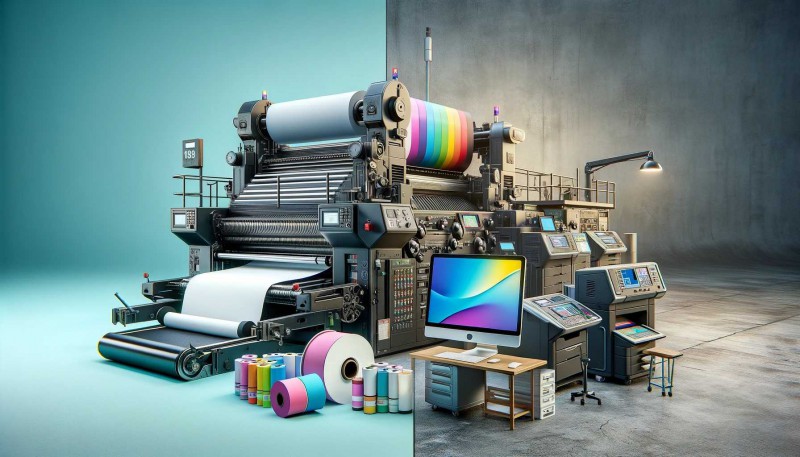Choosing "Digital Printing" or "Traditional Printing" According to Needs and Goals

There is no real winner in the battle between digital printing and traditional printing. In fact, each technology has its specific advantages and benefits, and the choice depends on the needs and project goals.
The Charm of Digital Printing
It is undeniable that digital printing excels in short-run printing. It allows printing smaller quantities, printing on demand, and printing variable data in the packaging. This variable data technology can achieve customization and personalized packaging, to enhance customer engagement. Creating unique 1-to-1 highly personalized designs for individual customers or adding seasonal variations packaging to product lines can all be achieved through digital printing. In addition, digital printing is very suitable for small-scale trial runs when launching new products. As we all know, speed to market is very important, and the speed of digital printing allows companies to quickly get products to consumers.
Some people would think that with so many speed and customization options for designers, the quality of digital printing may be low. But this is not correct. As far as printing technology is concerned, the quality of digital printing has greatly improved and can be comparable to traditional printing, which makes digital printing a viable option for projects that require high-resolution visual effects. In addition to this, digital printing often has a faster turnaround time than traditional printing, making it perfect for tight deadlines.
Traditional Printing Sticklers
When it comes to high-volume printing, traditional printing is still the best solution. For high-volume printing, there are more substrates to choose from. Traditional printing also offers online coating capabilities and can combine branded PMS colors. Some offset printers can even incorporate decorations such as cold foil during the printing process. For high-volume production lines with similar die-cut lines, traditional printing allows multiple SKUs to be run simultaneously, saving tooling costs.
The wider range of substrates available for traditional printing also opens up more possibilities for creative expression. From luxuriously textured papers to unique synthetic materials, traditional printing allows designers to explore a wider palette of materials, enhancing the value and memorability of the final product. In addition, traditional printing offers a wealth of post-processing options such as embossing, varnishing, and die-cutting, further enhancing the visual and tactile experience of printed materials.
Choosing Depends on Needs and Goals
While the quality gap has narrowed, each method has its advantages in specific areas. Whether it is personalization or variable data, digital printing is a good way to achieve unique effects. However, traditional printing provides a sense of luxury, such as embossing and hot foil stamping effects, which are difficult to replicate in digital printing before.
However,
HONGSAM Digital launched Hong-Jet®
Water-based Digital Foil Stamping Printing Solution to meet the requirement of digital foil printing.
Ultimately, which method to choose depends on the goals of the project. Choosing between digital and traditional printing methods should be driven by the specific results you want to achieve, with key factors including the project itself, time to market, and client needs. Short-term holiday or special products may be better suited to digital printing, while traditional printing excels in high-volume production, luxury effects, or a wider range of substrate options.
What About the Sustainability of Printing?
Sustainability is a growing concern (55% of consumers say they are willing to pay more for eco-friendly brands), and digital and traditional printing each have their advantages. Working with a company that is certified for Sustainable Green Printing (SGP) can ensure environmentally responsible practices. Additionally, certifications such as the G7 color standard and GMI certification guarantee color consistency and accurate reproduction. Full certification of the entire mill will ensure that you are getting sustainably produced work, whether you are printing digitally or traditionally.
Beyond certifications, designers can also make a big impact with material selection. Look for paper mills that prioritize sustainable practices, such as using recycled materials or incorporating alternative fibers such as hemp, to improve the sustainability of printed products.
 Oct 15,2024
Oct 15,2024
